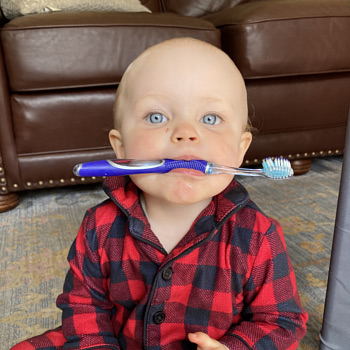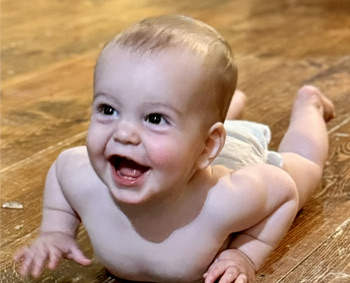PROVIDING CARE FOR YOUR YOUNGEST FAMILY MEMBER
We are a family practice and love to care for family members of all ages! We try our best to provide a comfortable and safe environment for your loved ones.
THE FIRST VISIT
Your child's first dental visit is to help your child feel comfortable with the dentist. The first dental visit is recommended by 12 months of age, or within 6 months of the first tooth coming in. The first visit often lasts 30 to 40 minutes. Depending on your child's age, the visit may include a full exam of the teeth, jaws, bite, gums, and oral tissues to check growth and development. If needed, your child may also have a gentle cleaning. This includes polishing teeth and removing any plaque, tartar, or stains. The dentist may show you and your child proper home cleaning techniques such as flossing, and advise you on the need for fluoride. Baby teeth fall out, so X-rays aren’t always done. Your child's dentist may recommend X-rays to diagnose decay, depending on your child's age. X-rays are also used to see if the root of a baby tooth may be affecting an adult tooth. In general, it is best that young children not have dental X-rays unless absolutely needed.
THE SECOND VISIT
Just like most adults, children should see the dentist every 6 months. Some dentists may schedule visits more often, such as every 3 months. This can build comfort and confidence in the child. More frequent visits can also help keep an eye on a development problem. Sometimes if the child has additional needs or a more extensive procedure is required we will refer to qualified pediatric dentists.
PROTECT YOUR CHILDREN’S TEETH AT HOME
Here are some tips to protect your children's teeth:
- Before teeth come in, clean gums with a clean, damp cloth.
- Start brushing with a small, soft-bristled toothbrush and a very small amount of toothpaste (the size of a grain of rice) when your child's first tooth appears. Use a pea-sized dab of fluoridated toothpaste after 3 years of age. This is when the child is old enough to spit out the toothpaste after brushing.
- Prevent baby bottle tooth decay. Don't give children a bottle of milk, juice, or sweetened liquid at bedtime or when put down to nap.
- Limit the time your child has a bottle. Your child should empty a bottle in 5 to 6 minutes or less.
- Help your child brush his or her own teeth until age 7 or 8. Have the child watch you brush, and follow the same brushing pattern to reduce missed spots.
- Limit foods and treats that increase tooth decay. This includes hard or sticky candies, fruit leather, and sweetened drinks and juice. Offer fruit rather than juice. The fiber in fruit tends to scrape the teeth clean. Juice just exposes the teeth to sugar.



 Website Powered by Sesame 24-7™
Website Powered by Sesame 24-7™